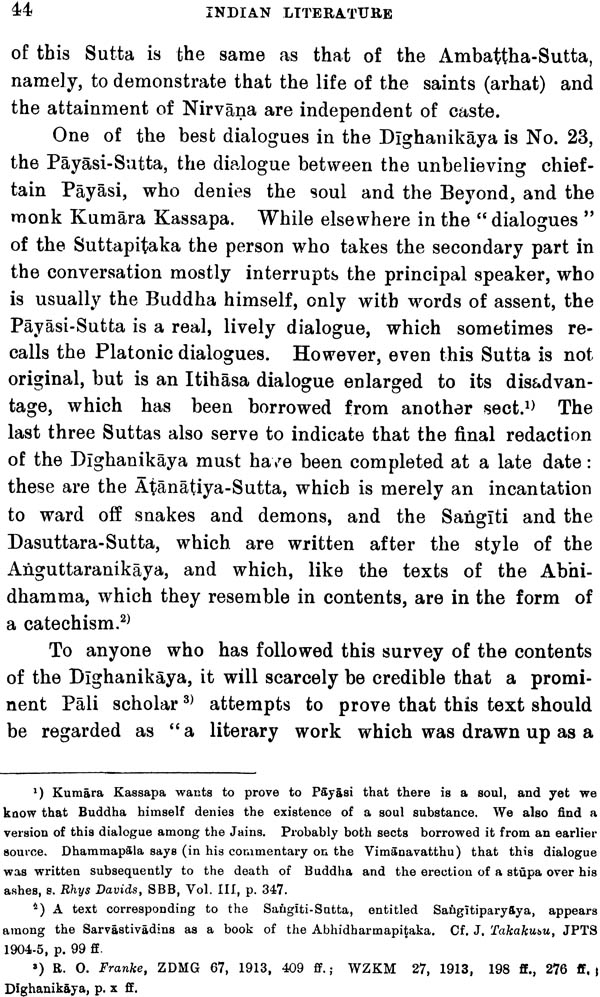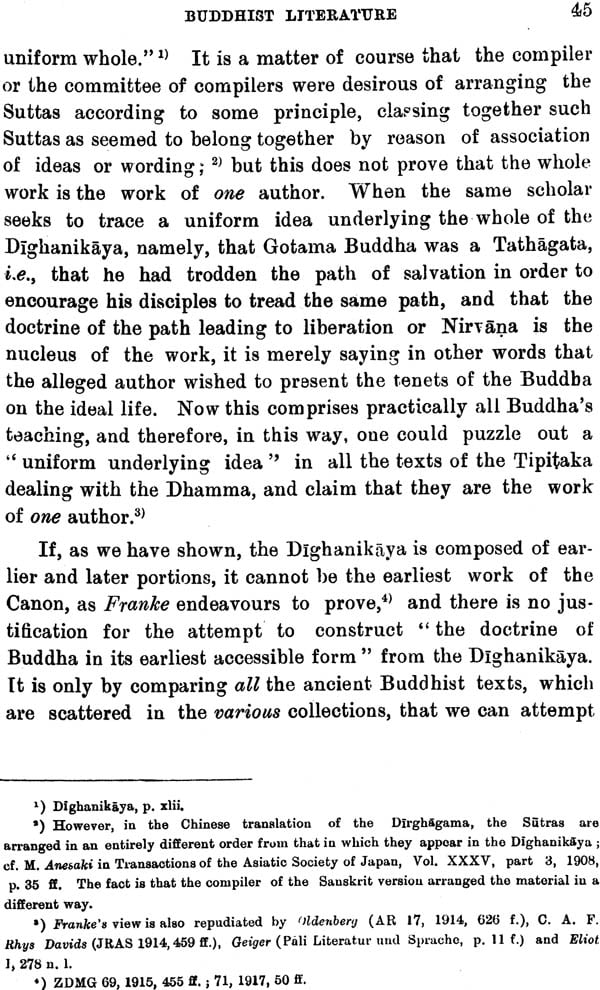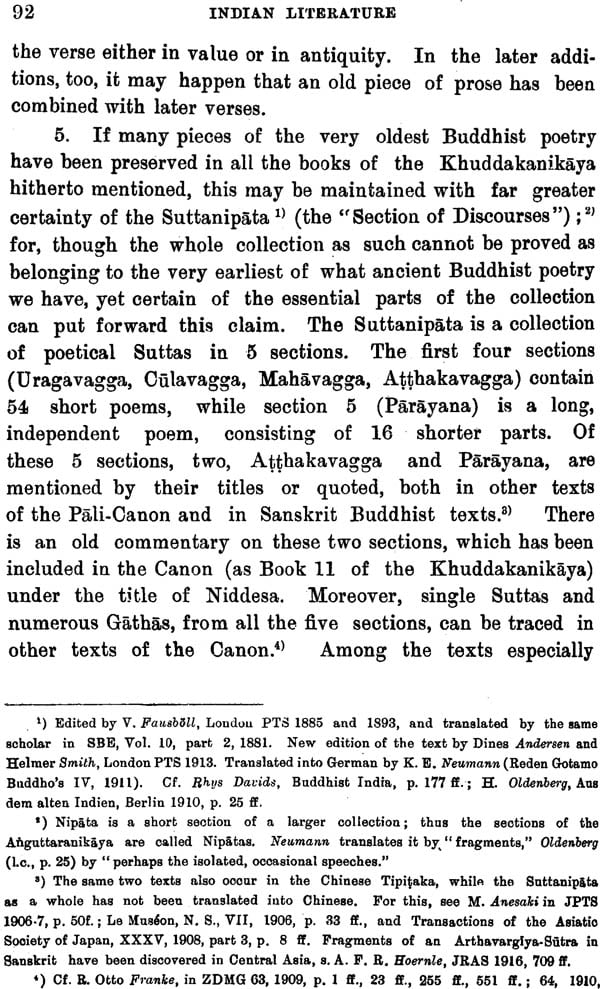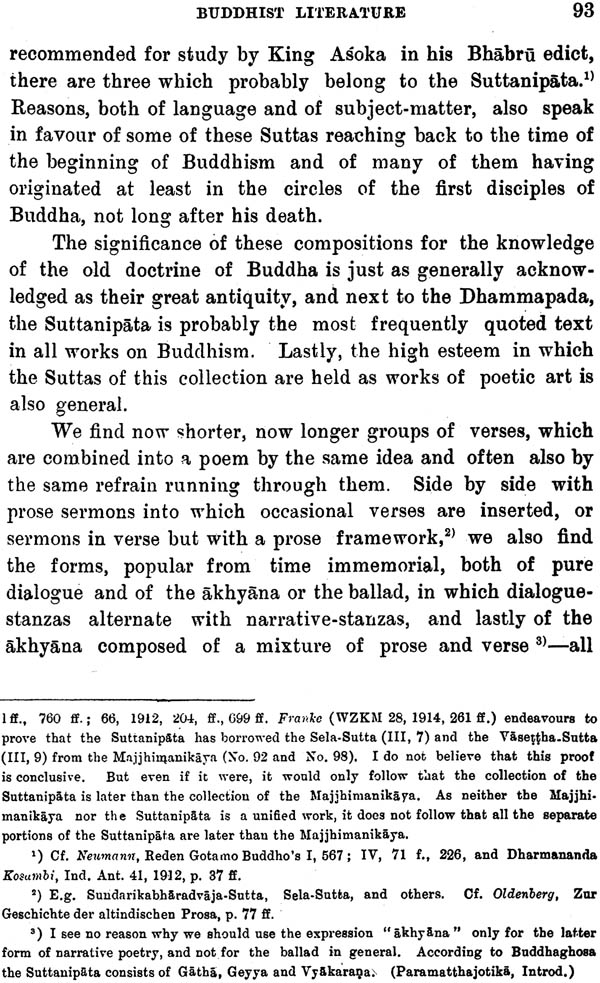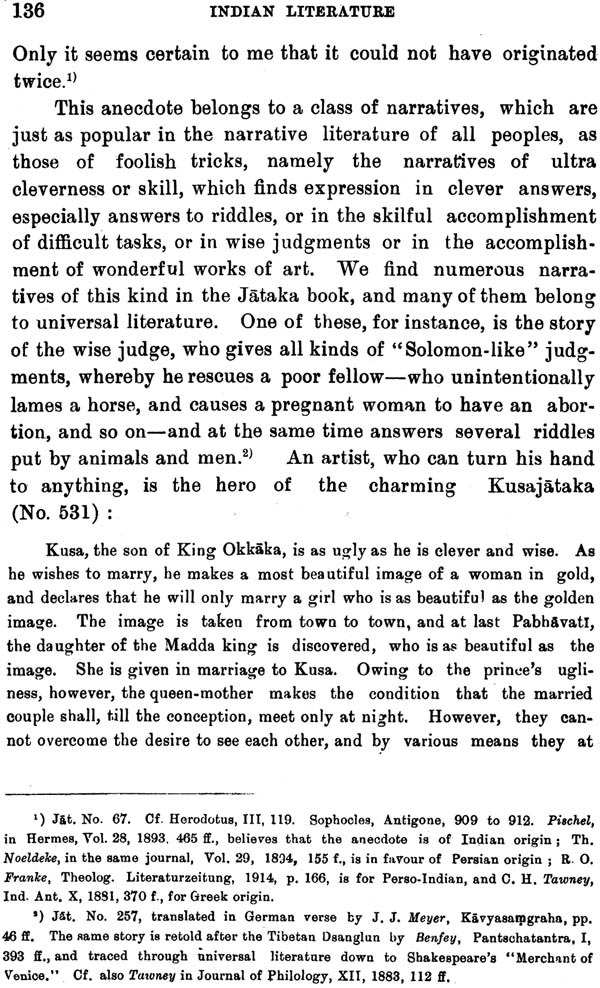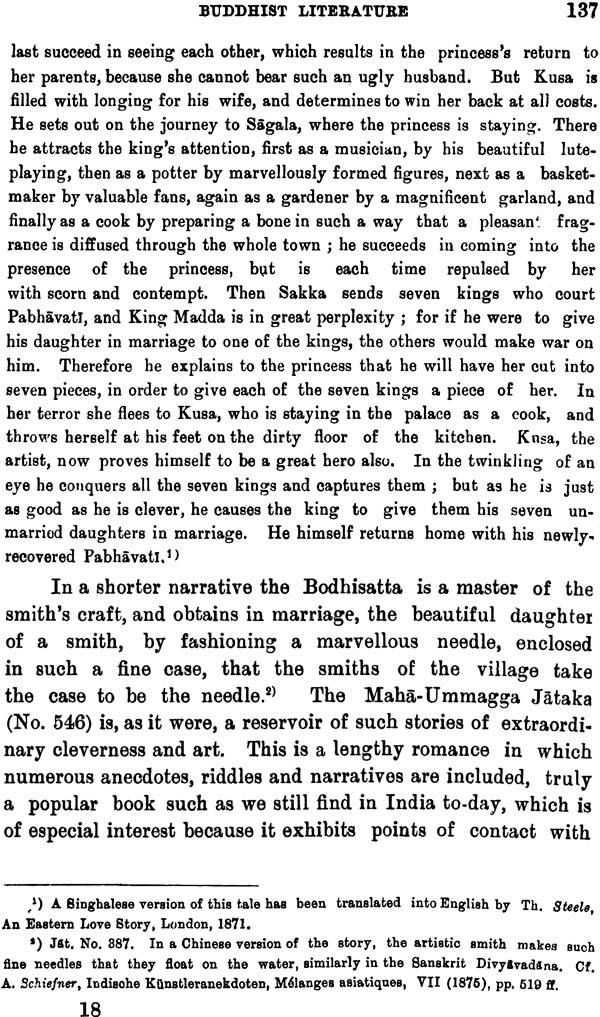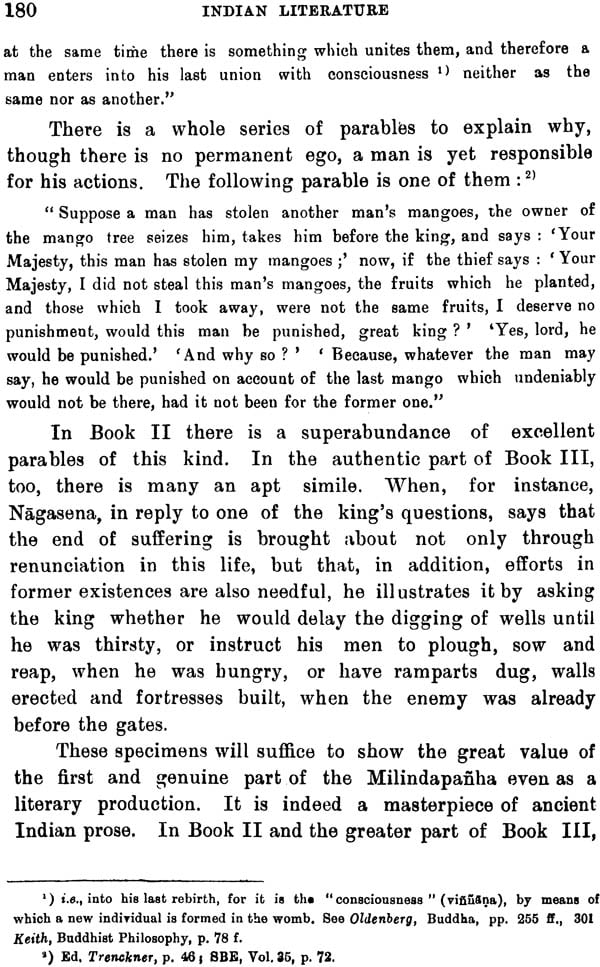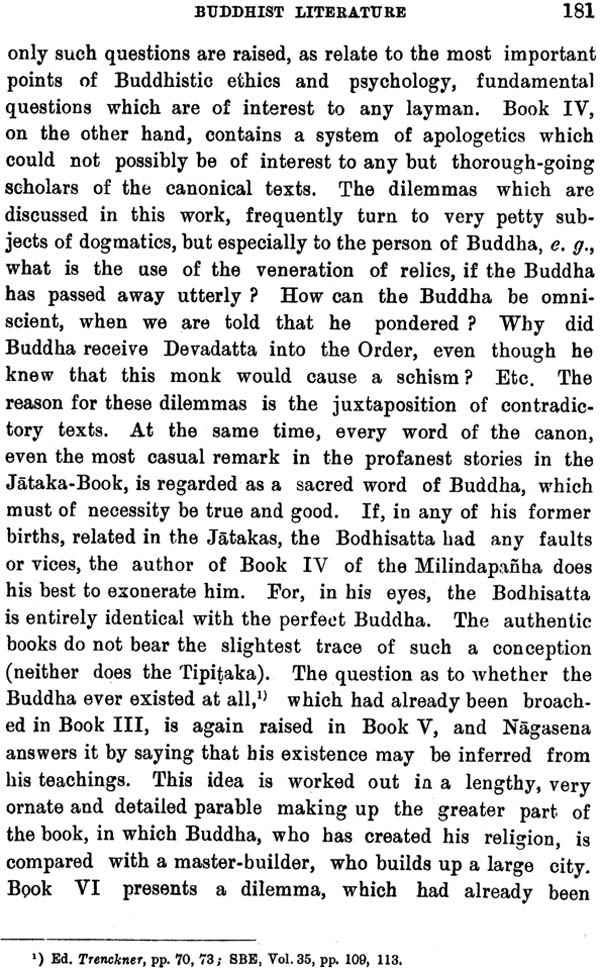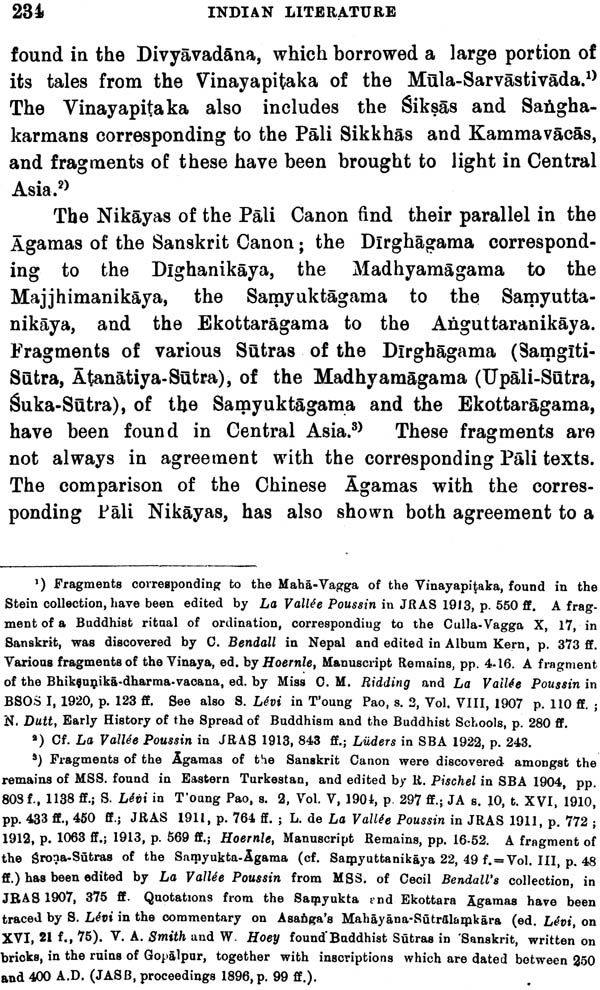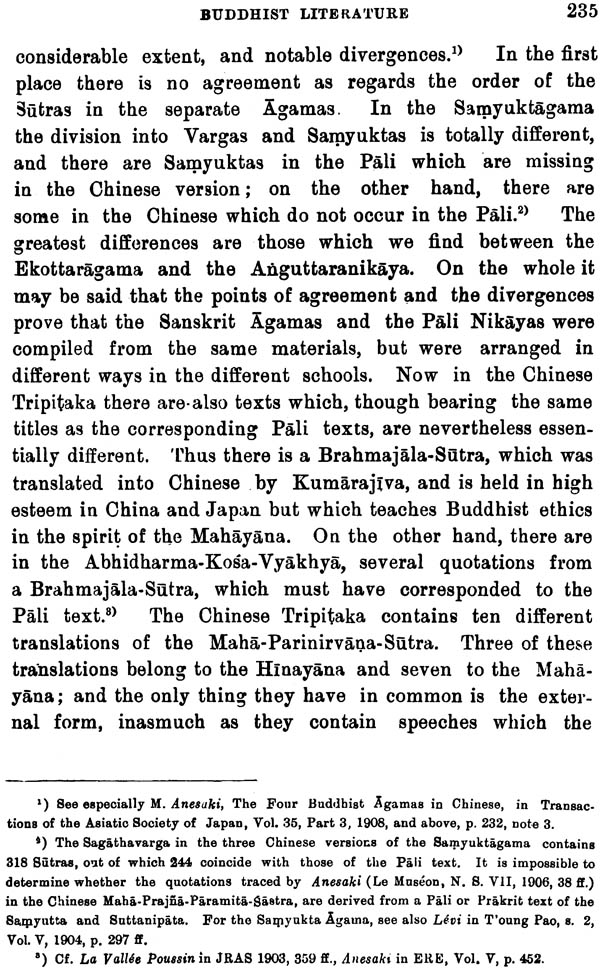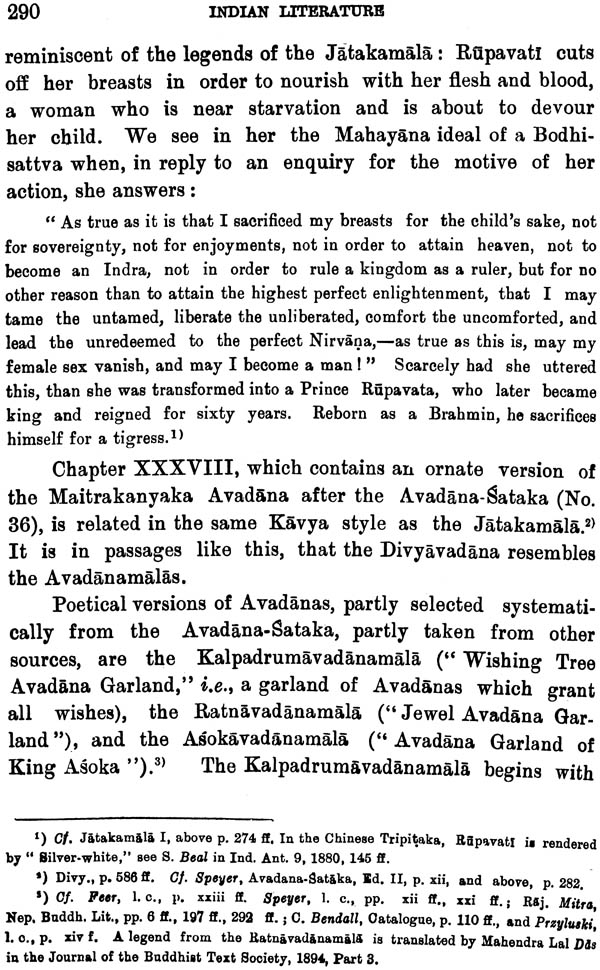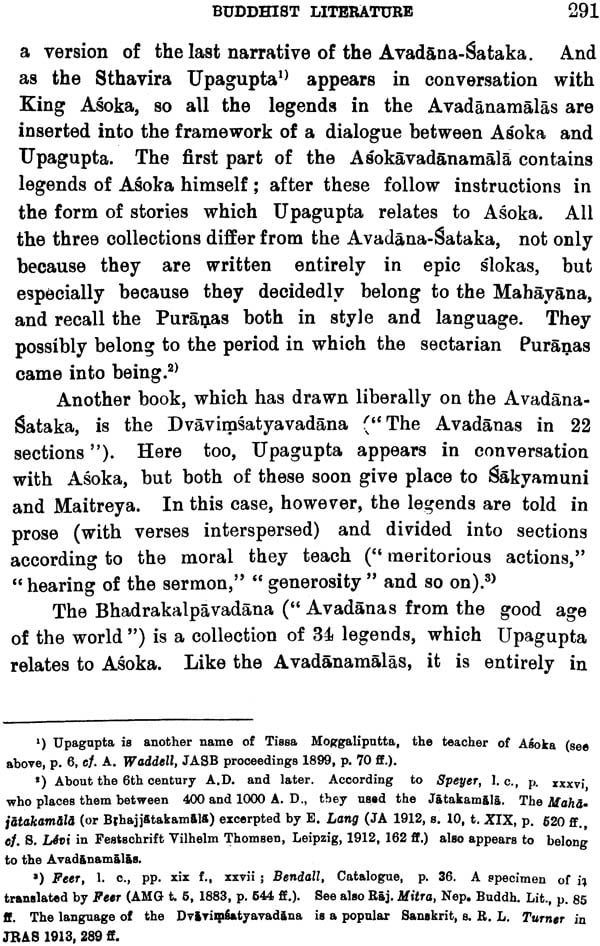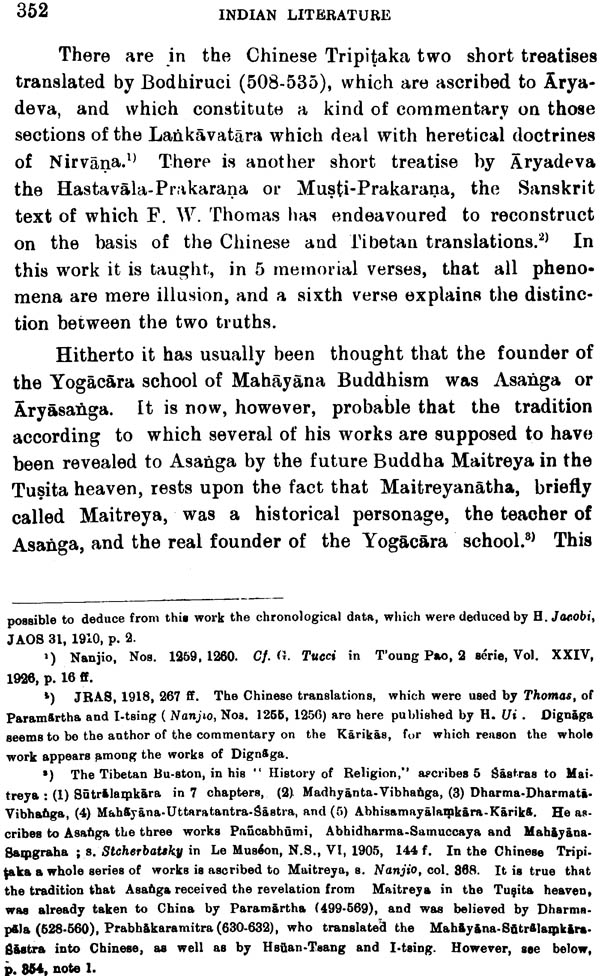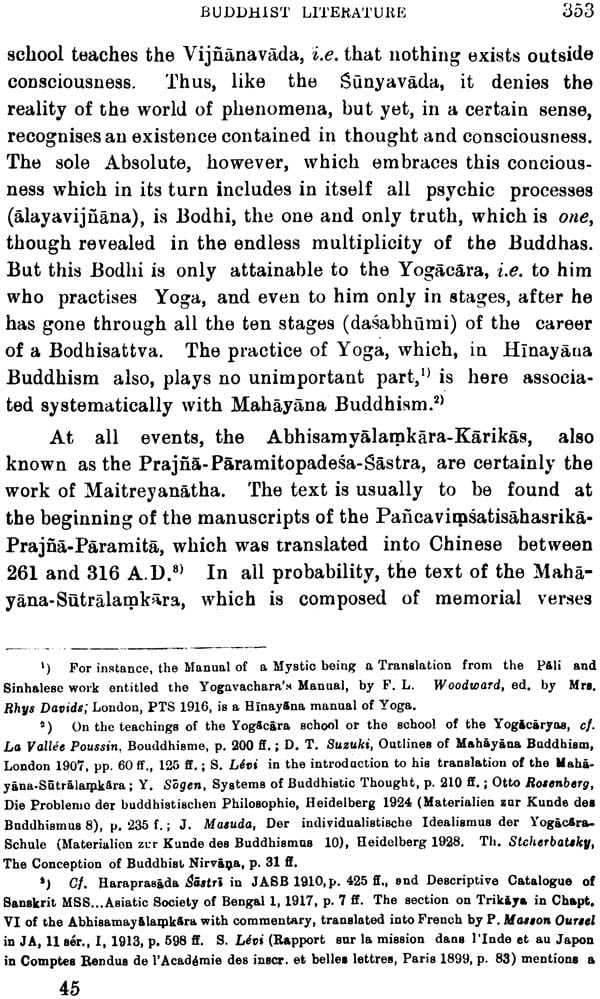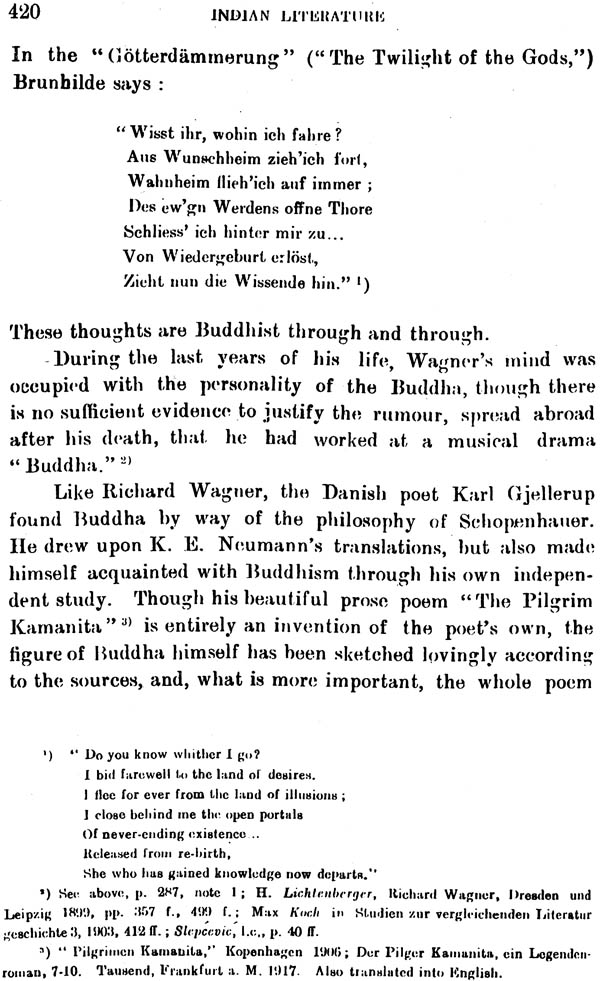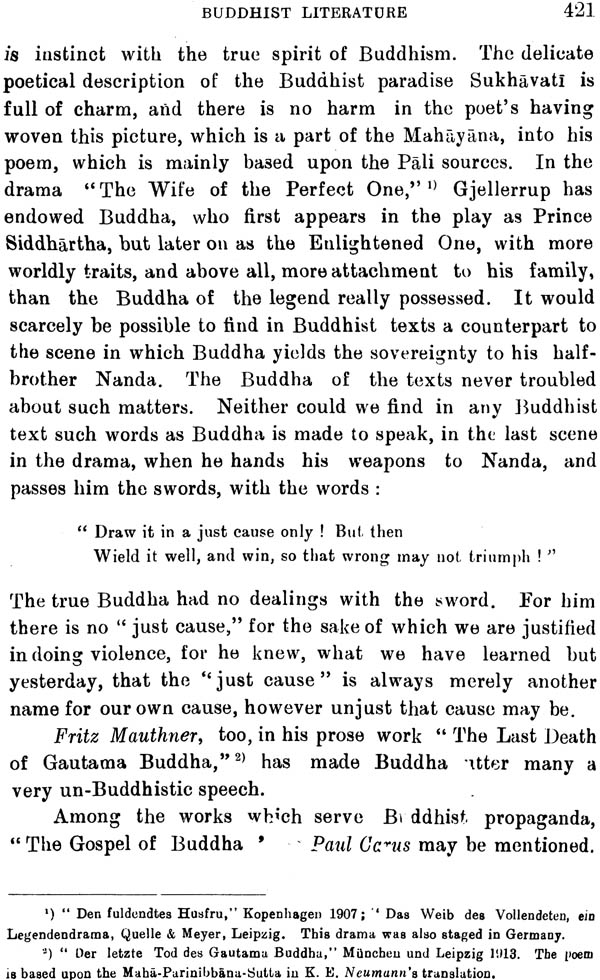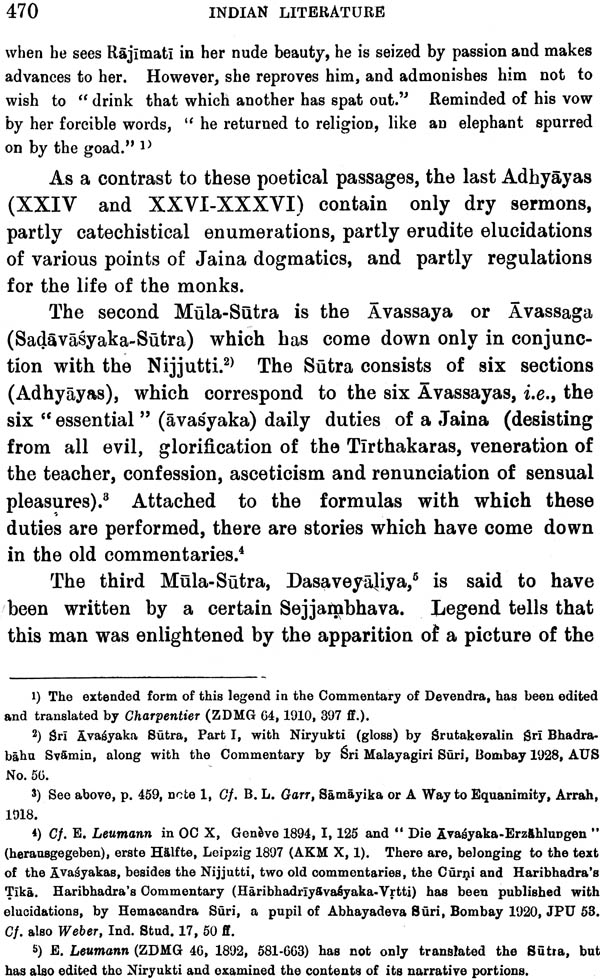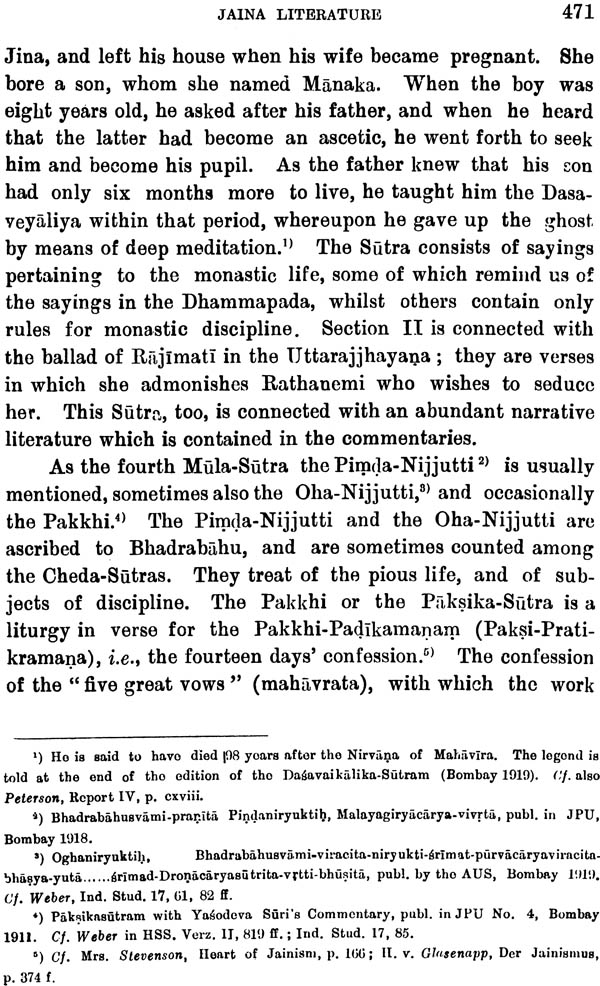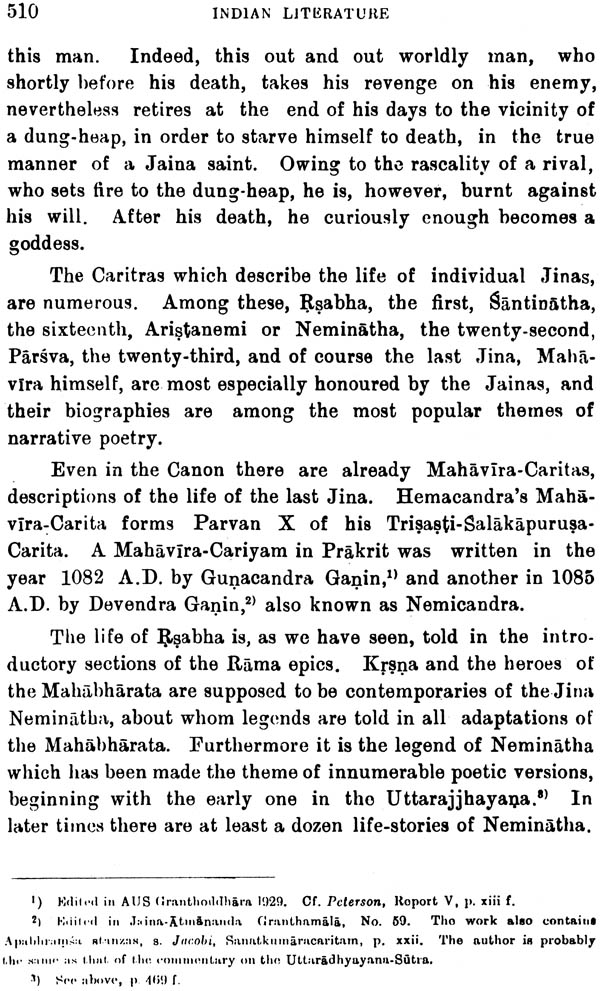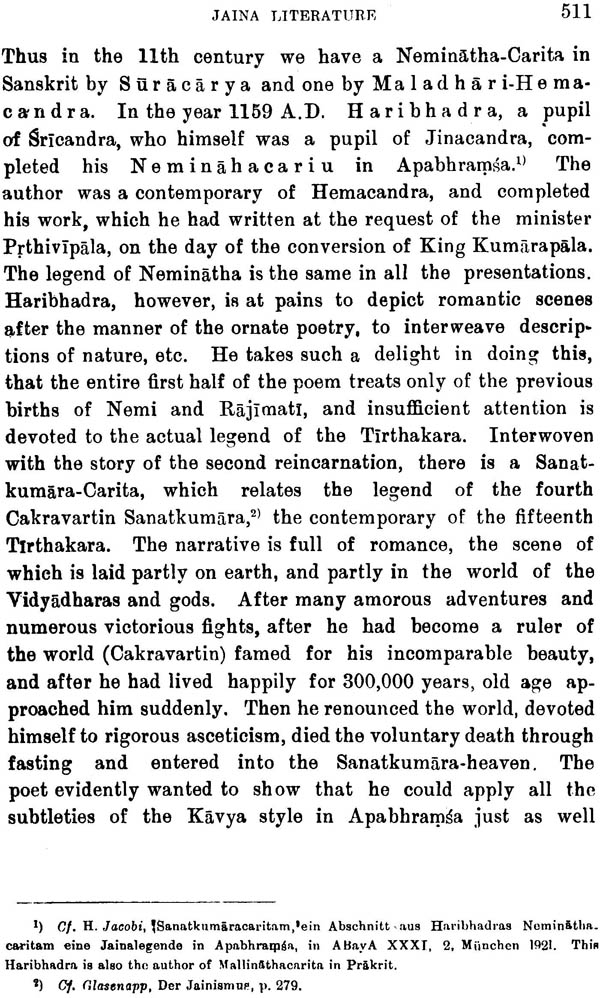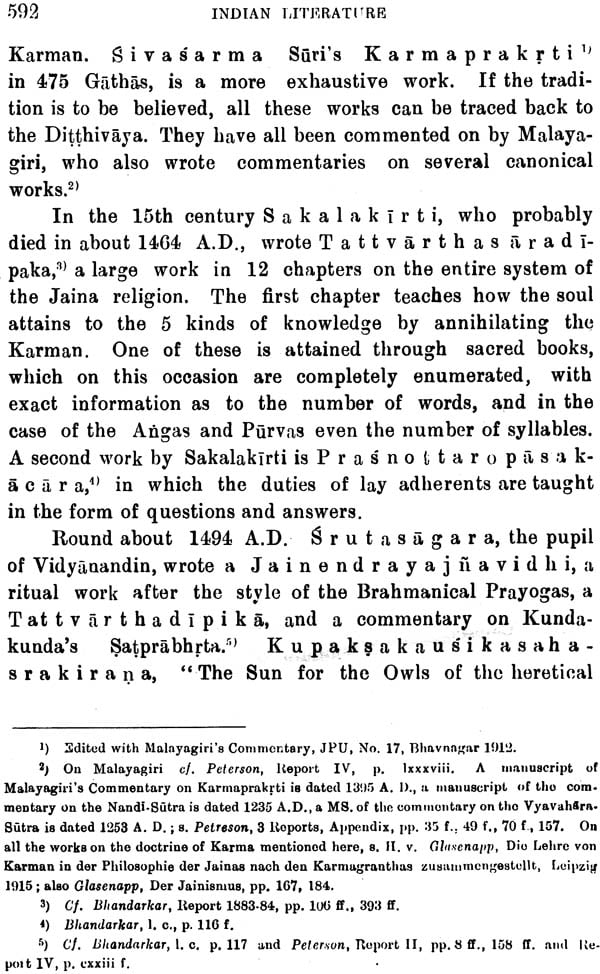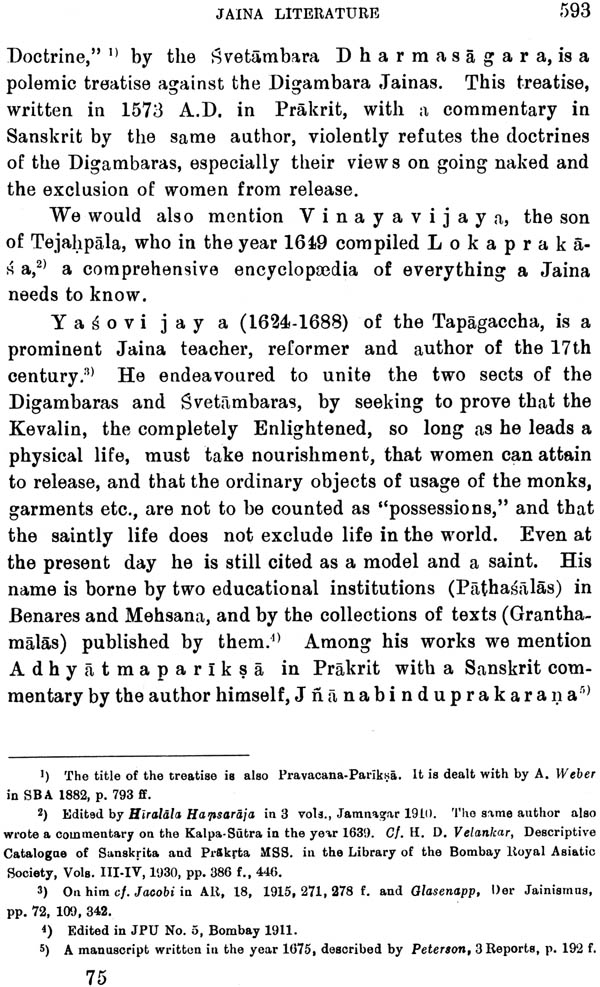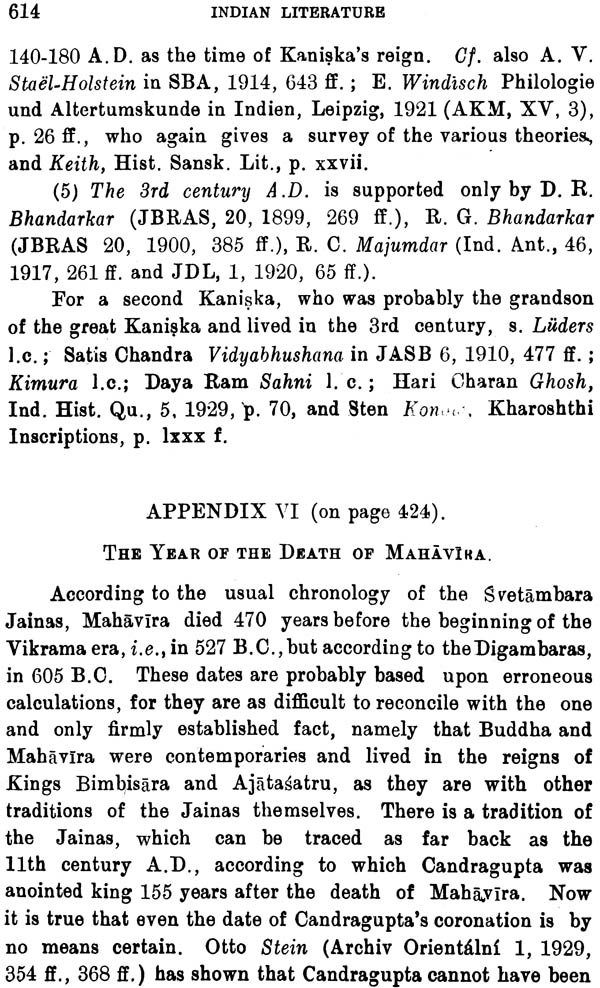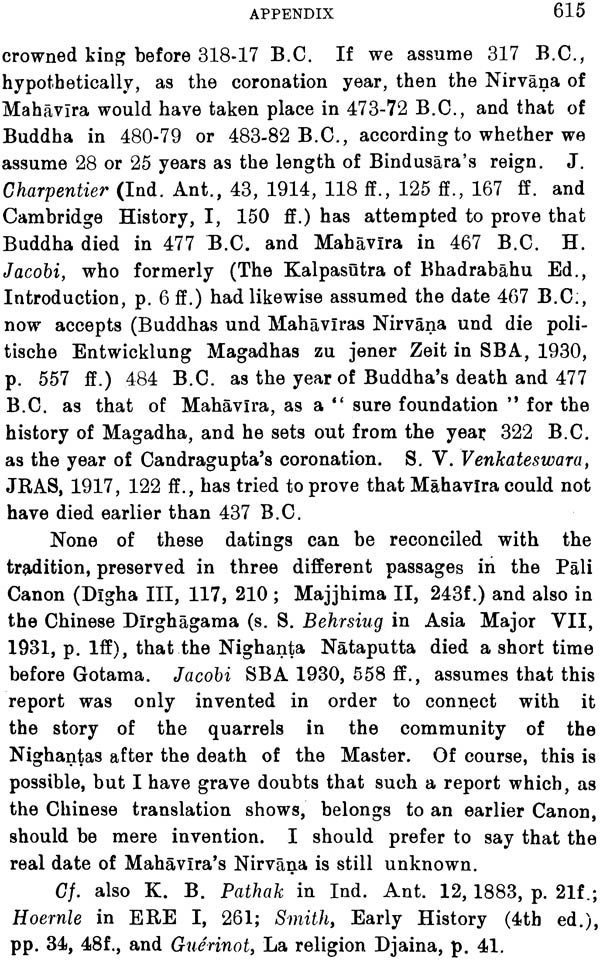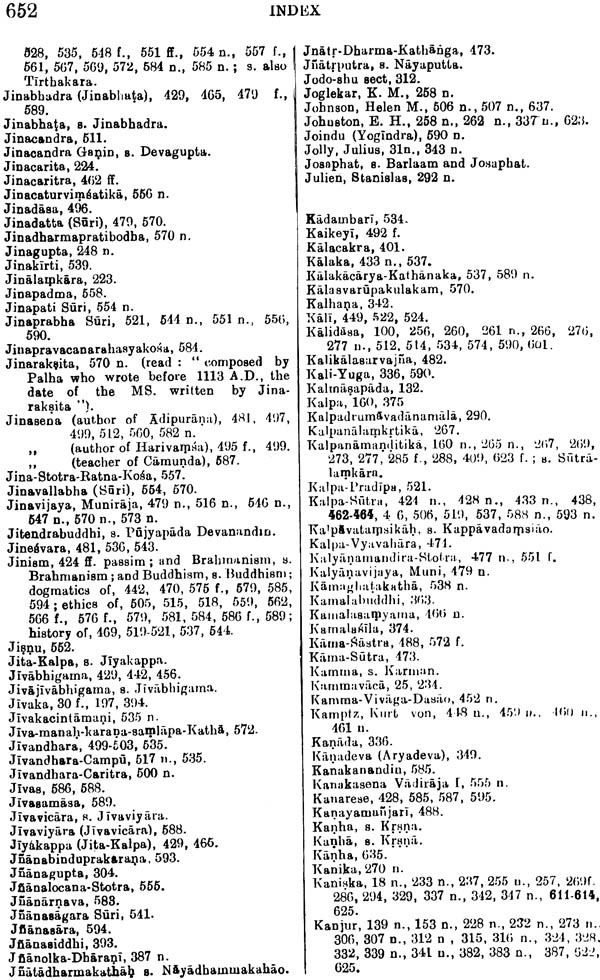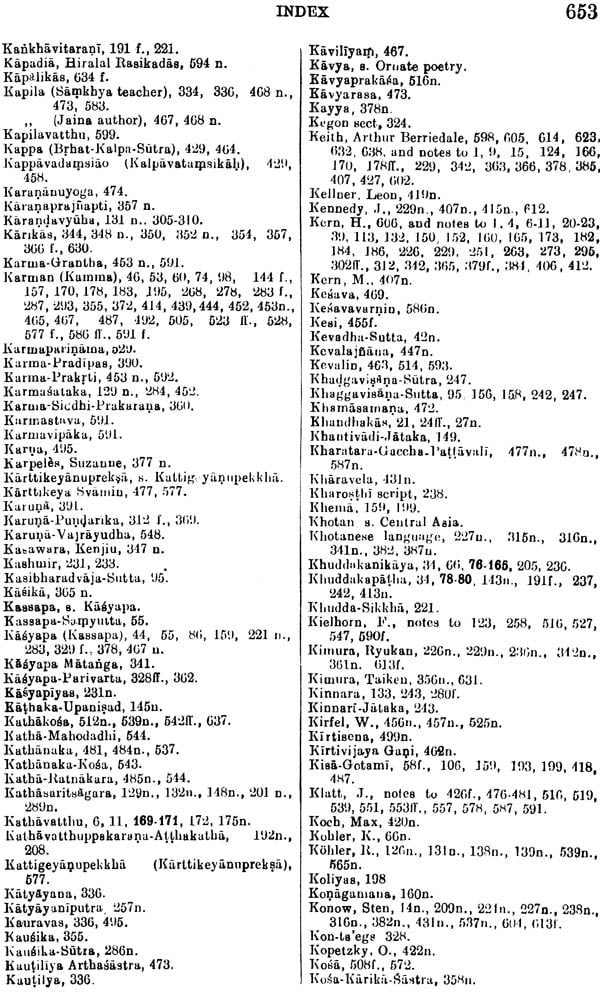
A History of Indian Literature Vol II. Buddhist Literature and Jaina Literature
Book Specification
| Item Code: | ISL38 |
| Author: | Maurice Winternitz Trans. From the original German by Mrs. S.Ketkar and Miss B.Kohn |
| Publisher: | MUNSHIRAM MANOHARLAL PUBLISHERS PVT LTD |
| Language: | English |
| Edition: | 2018 |
| ISBN: | 812150101X |
| Pages: | 693 (Vol II. Buddhist Literature and Jaina Literature) |
| Cover: | HardCover |
| Other Details | 6.5" x 10.0" |
| Weight | 1 kg |
Book Description
History of Indian Literature is a classic work covering the entire gamut of Indian secular and religious literature including epic, Iyric, dramatic and didactic poetry, as well as narrative and scientific prose. It includes not only the large number of works of religious literature - hymns, sacrificial songs, incantations, myths and legends, sermons, theological treatises, polemical writings, manuals of instruction on ritual and religious discipline but also the Iyrical and dramatic works, including the two great epics, the fairy-tales, fables, prose-narratives, the belles-lettres and works on various sciences.
The inclusion of this vast material, covering almost three thousand years of literary activity, could not be compressed into a single volume. Hence this was divided into two volumes by the author. Volume I includes, besides an introductory chapter, the Vedas, the Ramayana and the Mahabharata, the Puranas and the Tantras, while volume II deals with the Buddhist and the Jaina literature with an Index at the end of each volume.
Maurice Winternitz was born in Austria on 23 December 1863. After the completion of his studies at his native town, he entered the University of Vienna in 1880 for higher studies. In 1885, he was awarded doctorate for his theses on 'Ancient Indian marriage ritual according to Apastamba, compared with the marriage customs of the Indo-European peoples.' In 1898 he went over to Oxford as an amanuensis of Prof. Max Muller where he stayed for 16 years during which he worked for the preparation of the second edition of the Rgveda. During this period, he began the task of cataloguing the Vedic manuscripts in the Bodleian Library and the Whish Collection of South Indian manuscripts at the Royal Asiatic Society, London, besides working on a General Index to the 49 Volumes of the Sacred Books of the East series. In 1899, he was appointed Lecturer of Indo-Aryan Philology and Ethnology at the University of Prague and, in 1911, to the chair. In 1904, he established a special library of Indology and Ethnology at the University. He came to India, in 1922 at the invitation of Rabindranath Tagore. During the sojourn in India, he delivered lectures at Universities and learned societies. He also wrote over 450 articles. He died on 9 January 1937.
Just five years ago, when I wrote the preface to Volume I of this "History of Indian Literature," I had hoped that it would be possible to publish Volume II complete two years later; but the task of dealing, for the first time, with Buddhist literature presented far greater difficulties than I had foreseen. For this reason, even now only the first half of Volume II is appearing. I hope, however, that the second half-the conclusion of the work-will follow in the course of next year.
I am only too conscious of the fact that a presentation of Buddhist literature, which forms the subject-matter of this half-volume, is, at the present stage of our knowledge, a hazardous enterprise. A great part of this literature has only just been opened up, while a still greater part, especially of the Buddhist Sanskrit literature, but also some important Pali texts, is still waiting for translators and researchers and even for editors. In addition to this, with the small number of workers in the province of Sinology, the light which the Chinese translations throw upon the history of Buddhist literature has scarcely begun to shine. Here we may surely hope for help and improvement in the near future from French and Japanese scholars. We may also expect very shortly considerable enrichment of our knowledge of Buddhist literature and its history from the investigation of the Central Asian finds-the wealth of manuscripts which M. A. Stein has brought back from Khotan, and A. Grunwedel and A. yon Le Coq from Turfan. Never-theless it will take decades before all the- results of these investigations will be available. An American colleague of mine bit the mark when he recently wrote to me: 'I can easily understand that your History of Buddhist Literature is the devil's own job to write.' And yet, the attempt to simply will no longer do, now-a-days, to write a history of Indian literature without doing justice to the Buddhist literature. Buddhism, after all, is and remains that production of the Indian mind, which is the most important in the history of the world. And how can we understand Buddhism without knowing its literature? Just as in a history of Indian religion the religion of Buddha would have to occupy a large space, just as a history of Indian art could not exist without Buddhist art, so too the history of Indian literature would show a gaping chasm if Buddhist literature were not presented therein. Even though this literature is to-day more at home in Ceylon and Burma, in Nepal and Tibet, than in India. proper, yet it grew' up on Indian soil, it bears all the characteristics of a genuine product of the Indian mind, it has, through far more than a thousand years, influenced Indian spiritual life, and naturally is most intimately connected with all the rest of Indian literature. However defective a presentation of Buddhist literature must necessarily still be to-day, it is nevertheless of some use for the progress of know- ledge. We must have the courage to err. Our errors will serve as stepping-stones over which the knowledge of future generations of scholars will stride to new truths.
The literary references in the notes give sufficient information concerning the works from which I have drawn and the scholars to whom I am indebted. I should not, however, like to omit in this place the expression of my sincere thanks to my honoured colleague, Professor Louis de La Valle Poussin in Brussels, and my dear friend and former pupil, Professor Jyun Takakusu, for several valuable printed papers and written communications.
Preface to the German Edition
From the Preface to the German Edition
Preface to the English Translation
List of Abbreviations used in the Notes
Directions for Pronunciation of Indian Names and Words
SECTION III. BUDDHIST LITERATURE
- The Pali Canon or the Tipitaka
-
- The Speeches and Dialogues
- Narratives, Songs and Sayings
The Abhidhammapitaka. Buddhist Scholasticism -
- Remnants of the Sanskrit Canon
The Mahavastu
The Lalita Vistara
The Poet Asvaghosa and his School
The Avadana Literature
The Mahayana-Sutras
The Masters and Poets of the Mahayana
Mahatmya, Stotras, Dharanis and Tantras
Buddhist Literature and Universal Literature
The Vinayapitaka of the Pali Canon
The Suttapitaka of the Pali Canon
Non-Canonical Pali Literature
Buddhist Literature in Pure and Mixed
SECTION IV. JAINA LITERATURE
ADDITIONS AND CORRECTIONS
INDEX
- Jinism and its Literature
-
- The Canons (Siddhanta) of the Jainas
The Non-Canonical Jaina Literature Appendix I. The Year of Buddha's Death -
- Did a Gotama Buddha live?
Appendix II. What is Pali?
Appendix III. Bhabru-Bairat Edict of Asoka
Appendix IV. Time and Life of Buddhaghosa
Appendix V. The Date of Kaniska's Reign
Appendix VI. The Year of the Death of Mahavira
